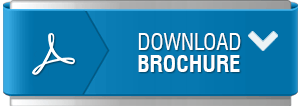
Mazen Abou Chaaban
Emirates Speciality Hospital, UAE
Title: Management of hypertension in children and adolescents
Biography
Biography: Mazen Abou Chaaban
Abstract
Blood pressure in pediatric age group varies with age, sex and height. It is categorized into primary and secondary hypertension (an underlying cause can be identified). Essential hypertension is being increasingly recognized in children especially in adolescents and form 12% to 18% of the etiology of hypertension in this age group. Treatment for essential hypertension is mainly non-pharmacological in the form of weight reduction, reduction of salt intake and exercise. Mild pharmacological treatment is needed in some patients as supplementary to the other. Hypertension in children and adolescents is mainly secondary in origin. Renal parenchymal disease is the most frequent (70-80%) causes of secondary hypertension while renovascular, cardiovascular and endocrinal disorders constitute only 20-30%. In secondary hypertension, treatment of the underlying etiology is in most of the cases, the key of success in the management of hypertension. Although the approach to the treatment of hypertensive children differs somewhat from that of the adult and the general principals are similar. Pharmacological treatment is mandatory in these patients and should be done under the following rules; should be used in stepwise fashion, the least toxic drug should be prescribed first, use maximum recommended dose of one pharmacological drug prior to adding another and when combined drug therapy is used, the drug being prescribed should have different sites or modes of action in order to attain an additional effect. Some of the antihypertensive drugs used are diuretics which are used as first line of treatment as well as in combination with other medications (e.g. Thiazine, Furosemide, etc.). Beta blockers can be used safely alone or in combination with others if there is no contraindication to their use as in bronchial asthma and congestive heart failure (e.g. Propranolol, Atenolol, Metoprolol, Pindol, etc.) Their mode of action is mainly by reduction in the heart rate and cardiac output and blockage of the release of renin from the kidneys in response to adrenergic stimulation. Alpha and beta-blocking agents (e.g. Labetalol) have added useful and safe lines in the treatment of chronic as well as acute hypertensive emergencies in pediatrics. Calcium channel blocking agents act on the smooth muscle cells of the blood vessels and inhibit the influx of calcium causing inhibition of the tone of the smooth muscles leading to peripheral vasodilatation and thus reducing the peripheral resistance (e.g. Verapamil, Nefidipine, Amlodipine and others.). Angiotensin converting enzyme inhibitors block the biotransformation of angiotensin I to angiotensin II and subsequently prevent the vasoconstriction and the release of renin and aldosterone. They are of great benefit in the treatment of high-renin hypertension. Other categories of antihypertensive drugs which are used in emergencies and in non-responder children and adolescents are alpha-adrenergic blocking agents, peripheral vasodilators and centrally acting alpha stimulators. Close monitoring, follow ups, parents and patients understanding and compliance are essential to assure proper and successful management of hypertension in children and adolescents.

